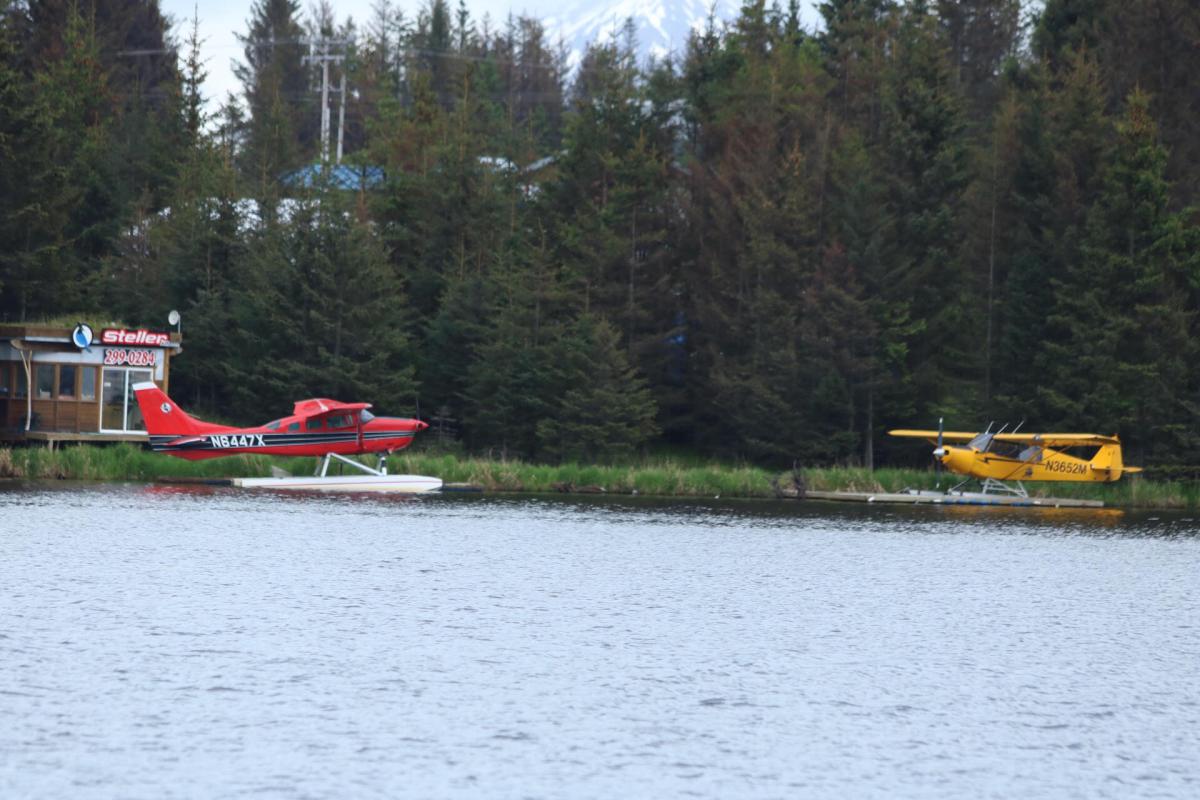
Floatplanes and other aircraft are taking off from Beluga Lake and Homer’s airport several times a day. With more than a handful of flightseeing, bear viewing and air taxi operations in town, some residents are concerned about low flying aircraft and the noise that accompanies them.
Homer City Council member Donna Aderhold started hearing complaints last year during a meeting about a floatplane access road. She started working with City Manager Katie Koester to see what the city could do to mitigate the issue. She added residents also suggested their own measures.
“There was a suggestion of a no-fly zone over Homer, changing traffic patterns, things like that,” Aderhold explained.
Aderhold and Koester asked Ken Thomas with the Federal Aviation Administration what could be done.
Ken Thomas works with the FAA’s Flight Standards Division. He was in Homer last month to hold a general safety meeting but returned Thursday for a community discussion. Thomas told the few in attendance that he’s heard the complaints.
“Over the past couple of years, I’ve heard a lot of different instances. ‘They’re 200 feet over my house, 500 feet over my house, the noise is rattling the dominos on my table,’” Thomas said, listing general complaints called into the FAA. “I know those are real, but what it boils down to for flight standards to get involved is a safe operation, and 200 feet over somebody’s house is not a safe operation.”
Thomas explicitly said the FAA’s primary concern is safety. It does not hold any direct authority over small aircraft noise but can impose measures when safety and efficiency are a concern. Its Airports Division also can guide airports through a few initiatives to mitigate noise.
Thomas notes that if pilots are following safety standards, noise should be minimal. Homer is considered a congested area, and planes should gain a minimum of 500 feet before making any turns away from the airport’s traffic pattern and must climb to 1,000 feet after takeoff.
“There’s plenty of room in Homer to get that 1,000 feet prior to turning towards the bluff. To take off and make the decision over the west end of the airport to turn towards the bluff immediately, that would be a really poor choice,” Thomas explained, “from the noise factor flying right over town, but we never climb into rising terrain.”
Planes flying over towns and crowds are required to fly 1,000 feet over the tallest object within a 2,000-foot radius. Thomas said pilots can fly along the coast to gain that altitude before passing over Diamond Ridge.
FAA inspectors need proof to identify any problem pilots. Thomas said pictures and video are best, but identification numbers on the aircraft, time and direction of flight are all important.
Pilot and flight instructor Tom Young said he’s seen problems as well but adds it’s generally pilots from out of town that are the issue.
“They’ll not follow the traffic pattern or fly over the ridge low, just conflicts with traffic sometimes,” Young said. “Generally it’s people who aren’t familiar with the area.”
The FAA does mandate that pilots obtain information about the airport they’re flying to. Thomas said he’ll keep tabs on the Homer area going into the future and plans to hold another pilot safety meeting this fall.
